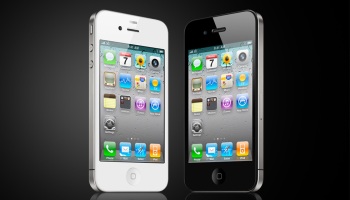Apple Sued Over iPhone 4 Antenna Issue

Lawsuit claims customers defrauded by iPhone 4’s known antenna issues
Apple chief executive, Steve Jobs’ alleged email response to the iPhone 4 owner who asked how Apple planned to remedy the signal issues plaguing the phone –”Non issue. Just avoid holding it in that way.” – apparently doesn’t cut it for everyone.
Frustrated over service issues that Apple appeared to be aware of in advance of launching the iPhone 4, New Jersey resident Alan Benvenisty and Massachusetts resident Christopher Dydyk – seeking to also represent other iPhone 4 owners – filed a class-action lawsuit against Apple in a US San Francisco District Court, according to Bloomberg.
Additionally, in a District Court in Maryland, area residents Kevin McCaffrey and Linda Wrinn similarly filed suits against both Apple and its US carrier AT&T, also citing issues related to the iPhone 4’s antenna.
While the San Francisco suit accuses Apple of unfair business practices and false and misleading advertising, a document procured by Gizmodo shows the Maryland suit to cover a laundry list of bad behaviours, namely: general negligence on the parts of Apple and AT&T and defects in design, manufacture and assembly by Apple. Both are accused of breach of implied warranty for merchantability; breach of implied warranty of fitness for a particular purpose; deceptive trade practices; intentional misrepresentation; negligent misrepresentation; and fraud by concealment.
The Maryland suit goes on to state: “Plaintiffs were sold defective iPhone 4 units, which drop calls and data service when held in a manner consistent with normal wireless phone use. Plaintiffs have experienced numerous dropped calls, and as a result, Plaintiffs are left with a device that cannot be used for the normal purpose and in the normal manner in which such devices are intended to be used.”
New design hampers signal
Unlike the iPhone 3G S, the iPhone 4 is constructed – rather beautifully, the critics agree – of front and back glass panels, held together by a stainless steel band that additionally acts as an antenna. When the phone is held in one’s palm, with the bottom left corner of the band covered over, signal strength is reportedly slashed.
A day after the iPhone 4’s 24 June release, Apple circulated a statement regarding the “normal manner” in which the smartphone should be used. And it is now looking to hire extra expertise in this area.
“Gripping any mobile phone will result in some attenuation of its antenna performance, with certain places being worse than others depending on the placement of the antennas,” Apple wrote. “If you ever experience this on your iPhone 4, avoid gripping it in the lower left corner in a way that covers both sides of the black strip in the metal band, or simply use one of the many available cases.”
 The cases, also called “bumpers,” figure into Dydyk’s San Francisco suit. Apple currently sells the cases separately – for $29 (£19) each, and in a choice of six colours – and Dydyk, in his suit, calls for Apple to be made to pay for a bumper for each customer.
The cases, also called “bumpers,” figure into Dydyk’s San Francisco suit. Apple currently sells the cases separately – for $29 (£19) each, and in a choice of six colours – and Dydyk, in his suit, calls for Apple to be made to pay for a bumper for each customer.
Within three days of the Phone 4’s launch, Apple reported that it sold more than 1.7 million of them.
“This is the most successful product launch in Apple’s history,” Jobs wrote in a 28 June statement.
He continued, offering the only apology iPhone users are likely to hear for a while. “Even so, we apologise to those customers who were turned away because we did not have enough supply.”